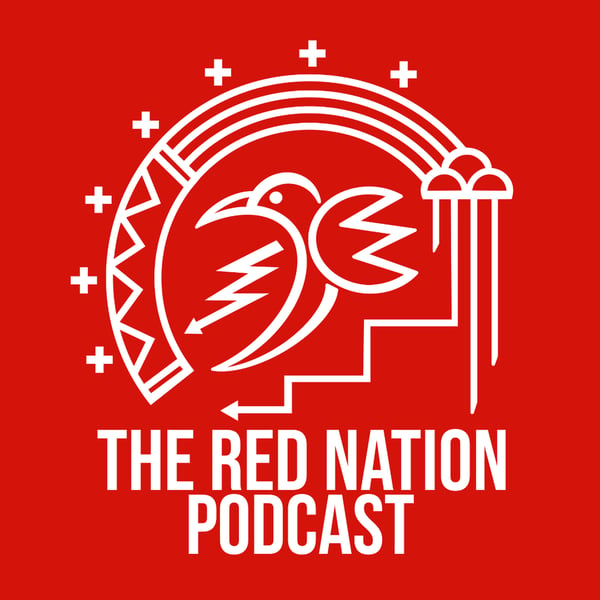Soulforce: Red, Black, & Brown Power in the Twin Cities w/ Jamie Curry & Jimmy Patiño
The Red Nation Podcast
The Red Nation
4.8 • 943 Ratings
🗓️ 5 August 2024
⏱️ 74 minutes
🧾️ Download transcript
Summary
This episode covers the radical history of the Twin Cities, which evolved in a unique and dynamic historical conjuncture in the long 1960s as a site in which African American, American Indian and Mexican American communities were concentrated in an otherwise overwhelmingly white state. The emergence of Black Power, the American Indian Movement, and the Chicano Movement parallel and overlapping in a shared urban site speaks to the socio-political context of injustice. These dynamic movements built infrastructure to confront these shared forms of repression, but through their particular communities: The Way organization in the Black community, Centro Cultural Chicano in the Mexican community, and in several independent schools in the American Indian community. These institutions—also evident in the emergence of the Black Patrol, the AIM Patrol and the Brown Berets in addressing police violence—emerged independently but with points of convergence and direct interaction.
Jamie Curry and Jimmy Patiño would also like to add the names and dates regarding the women in AIM: in May - July 28, 1968, the American Indian Movement is founded and conceived in Stillwater State Prison by Eddie Benton-Benai Jr., Dennis Banks, and Clyde Bellecourt; Alberta Strongwoman, Elkwind Dalmond, Caroline Dickinson, Fanny Fairbanks, Laura Waterman Wittstock and Elaine J. Salinas called the first meeting on the Northside. Not once did Clyde or Dennis take action or strategize without input from the women in the movement and are still the backbone today). Calling themselves (in ’68) Concerned Indian Americans (CIA), they start patrols in Minneapolis because of the school’s mistreatment of their sons and daughters, lack of decent housing, to combat weekly police brutality and racism inflicted upon and experienced by Indian people in the Twin Cities.
https://www.instagram.com/soulforcemn/
Watch the video edition on The Red Nation Podcast YouTube channel
The Red Nation Podcast is sustained by comrades and supporters like you. Power our work here: www.patreon.com/redmediapr
Transcript
Click on a timestamp to play from that location
| 0:00.0 | And the So, We are joined today by artist and curator James Currie as well as Jimmy Patino who's at the University of Minnesota. |
| 0:39.0 | They collaborated on putting together this really amazing exhibit that's unfortunately |
| 0:45.1 | going to be closed by the time this podcast goes to air but I want to kind of give |
| 0:49.7 | some reflection on I actually visited the exhibit. |
| 0:53.0 | It's called Soul Force. |
| 0:54.6 | It's at the African Heritage Museum in Minnesota, or in Minneapolis, Minnesota on the north |
| 1:01.0 | side. |
| 1:02.0 | So when I first entered the the sort of exhibit space I you know I saw all of these collages of photos and one thing that's really unique about Minneapolis you know this one of the reasons I kind of moved here is because of the history and the legacy of the American Indian movement. |
| 1:19.0 | But something that I found out as I studied the movement itself is that the American Indian movement or aim didn't arise in a vacuum. |
| 1:28.0 | You know, it was really influenced a lot by a Northside organizer, specifically black organizers, who had created community patrols in the wake of the assassination of Martin Luther King, Jr. |
| 1:41.0 | So there was always this sort of cross collaboration and influence and |
| 1:45.8 | inspiration with you know black organizers at the time the documents that I read but |
| 1:51.5 | I would love to hear both of your thoughts on this. the documents that I read |
| 1:55.0 | that I read talked about the Soul Patrol in the North Side. |
| 1:59.0 | People like, I met this individual, Spike Moss, |
| 2:02.0 | who's actually in this Moss, who talked about this really close collaboration |
| 2:06.9 | between American Indian and black organizers in the city, Chicano organizers, |
| 2:13.7 | is that I think Jimmy's probably knows a lot more about this. |
| 2:18.0 | The collaboration between Chicano organizers |
| 2:21.2 | and the American Indian Movement, especially a wounded knee. |
| 2:24.8 | There was, you know, a chicago organizers from Denver were, you know, smuggling in weapons and, |
| 2:30.5 | you know, really promoting and doing solidarity work in major metropolitan areas so this is a really you know as me as a historian this is a really beautiful treasure to kind of come in and see the collage of documents but then also the narrative there's a lot of but also thinking about the cultural components of it, |
... |
Please login to see the full transcript.
Disclaimer: The podcast and artwork embedded on this page are from The Red Nation, and are the property of its owner and not affiliated with or endorsed by Tapesearch.
Generated transcripts are the property of The Red Nation and are distributed freely under the Fair Use doctrine. Transcripts generated by Tapesearch are not guaranteed to be accurate.
Copyright © Tapesearch 2025.

